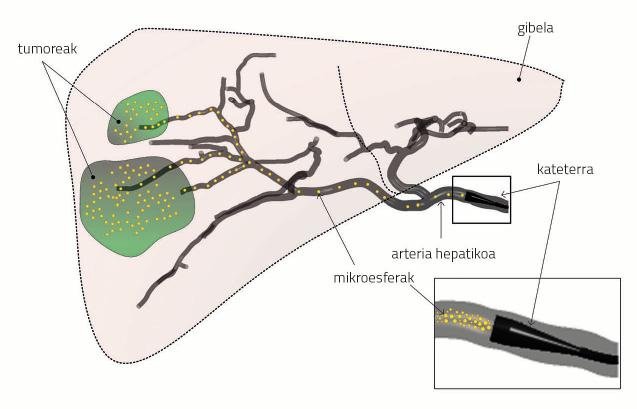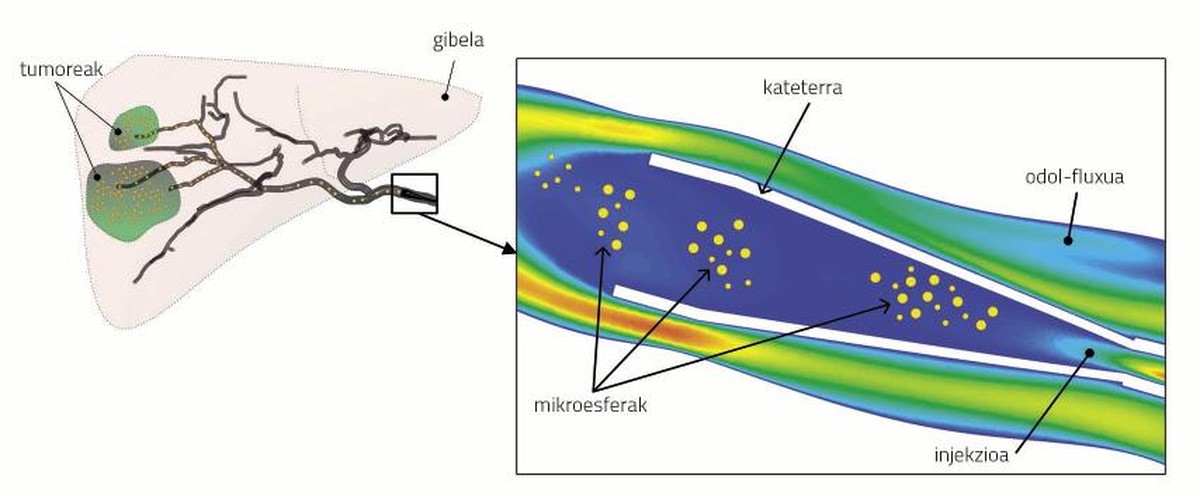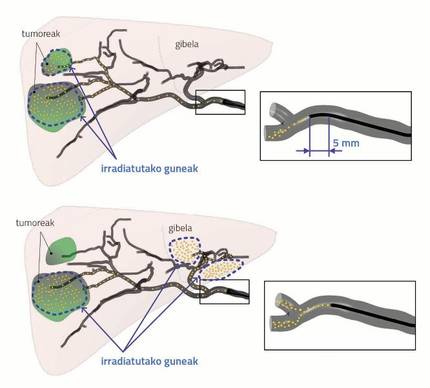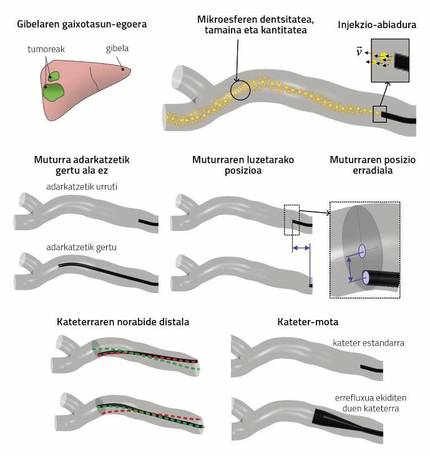Joining forces in the fight against liver cancer

According to Greek mythology, Prometheus stole the fire from Mount Olinpo and gave it to humans. Then, Zeus punishes him, tied him in a rock and for a season he sent an eagle to eat every night the pieces of his liver. However, the next morning, each time, Prometheus recovered from the liver, but in the evening the eagle returned to slaughter in the womb. So forever. Many times it has been said that the liver of Prometheus represents both the strength and weakness of the human being, destroyed every night and created every morning.
This passage shows that since ancient times the special character and importance of the liver is known. And it is that the liver is one of the most important organs of the human being and, in general, of vertebrate animals. Thus, cancer causes a lot of deaths by attacking the liver, the second of the most lethal [1]. In addition, between 60% and 80% of patients with colon, pancreatic, or breast cancer have liver metastases, i.e., tumors generated outside the liver spread to the liver [2]. It is evident, therefore, that research into liver cancer is very important. Thanks to them, treatments such as the so-called radioembolization have arrived. In recent years the latter is being imposed.
The following lines will explain the contributions of interest that industrial engineers can make to radioembolization and medicine in general. In order to meet new and more complex challenges, professionals from different fields need to work in the same direction, in collaboration. The author has collaborated with the doctors of the Clínica Universidad de Navarra. In particular, during his doctoral thesis he has analyzed radioembolization and various variables that can influence treatment.
Radioembolization
Embolization consists of obstructing (closing) the blood vessels, in short, preventing the transport of blood. Irradiation is the therapeutic use of radioactive energy.
During radioembolization, the doctor makes an incision in the femoral artery (inguinal area), where he inserts a catheter of approximately 1 mm. It then carries it manually to the hepatic artery (hepatic artery). Once the end of the catheter is placed in the hepatic artery, it injects radioactive microspheres of 32 ?m of diameter (and present in water). Blood flow carries the microspheres. The goal is to transfer radioactive particles to tumors and minimize irradiation from healthy parts of the liver (see Figure 1).
The microspheres have adhered to an itrium-90 radioisotope (emits beta irradiation around 2.5 mm return, with an average life of 2.6 days). The treatment lasts about an hour and usually the patient returns home the same day.
However, before syringing the microspheres that constitute a source of radiation in the body, a previous treatment is necessary to ensure the arrival of the particles to the proper place. Pretreatment is done with harmless particles. Thus, through medical images, the fate of microspheres is analyzed. This study serves to determine the position of the catheter in the treatment (strict sensu) and the speed with which the microspheres are injected.
The treatment is safe and effective. However, it should be taken into account that the doctor places the catheter manually and recites microspheres by hand. Therefore, if the location of the catheter and the injection speed of particles are not accurate, and therefore areas that should not be treated radiate, problems such as hepatitis, pneumonia, and stomach and intestinal ulcers may arise.
Engineers adding the army of radioembolization
Radioembolization is a really complex treatment, as it requires the collaboration of radiology interventionists, radiation oncologists, nuclear doctors, etc. (medical physicists, hepatologists, etc.) ). In the aforementioned thesis, engineers joined this large group with the aim of analyzing the dynamics of blood flow in the hepatic artery and the behavior of its particles.

During the study, the Computational Fluid Dynamics (CFD) tool was used to simulate blood flow and microsphere transport. The CFD considers geometry, the equations of the physical phenomenon and the boundary conditions. Geometry consists of defining which areas the blood flow and the transport of microspheres will be studied. On the contrary, the equations of the physical phenomenon define the blood flow and the transport of the microspheres. Finally, the establishment of the boundary conditions implies the placement of certain characteristics in the limits of the area under study, both in terms of blood flow (pressure and velocity) and microspheres (velocity).
An adequate definition of the three components allows to produce a reliable model. And, of course, the simulations made with a reliable model represent the blood pressure and speed and the speed of the particles. Figure 2 shows, for example, the speed of blood flow around the catheter and the location of the microspheres.
But it must be clear that in the analysis only what happens in the first part of the transport can be analyzed. At the moment, it is not possible to see how microspheres travel through small arteries, nor the effect of irradiation on the tumor. Therefore, in the research, we will say that radioembolization is a success if the microspheres leave the expected outputs, that is, the ducts that supply blood to the tumors (Figure 1).
Parameters analyzed
The research based on CFD simulations was carried out with the aim of responding to the sources of discussion found in the literature and the concerns of the doctors of the Clínica Universidad de Navarra. For this purpose, a series of parameters that appeared to influence the result of the radioembolization were selected. Figure 3 can help to understand the parameters listed below, as it graphically summarizes the variables.
? Condition of liver disease: related to the size, location and type of tumors. It affects the blood demand of the liver and, therefore, the ability to take microspheres.
? Density, size and quantity of the microspheres: the microspheres used in pretreatment and treatment are different.
? Injection speed of microspheres: it is difficult to reproduce in treatment this parameter specified in the pretreatment, since, as already indicated, the doctor injects the particles manually.
? Proximity of the tip of the catheter to the bifurcation of the blood vessel.
? Longitudinal position of the end: here it is also difficult to repeat in treatment the specified in the pretreatment.
? Radial position of the end: other so much.
? Distal direction of the catheter: the same.
? Type of catheter: currently there are numerous research on the design underway. In the research referred to in this article, the standard catheter and catheter that prevents reflux have been studied (see the “Type of catheter” in Figure 3).
It should not be forgotten that the modification of some parameter modifies the distribution of microspheres and their destination. In addition, the placement of a catheter in the artery involves the modification of the hemodynamic characteristics (pressure and speed) of the blood flow, which, being a physical barrier, conditions the natural flow. As a consequence, the trajectory and distribution of the microspheres varies. Therefore, it is very important to know beforehand the characteristics of blood flow near the end of the catheter.
Although the influence of each of the eight parameters of the list has been analyzed in the thesis, here the situation of the catheter, probably the most important variable, will be explained.
Importance of the catheter location
When cutting and inserting the catheter there are two main options: that the end of the catheter is close to one of the branches of the artery or that it is far away (see “near end or not to branching” of figure 3). The rest of parameters related to the catheter location are the longitudinal position of the end, the radial position of the end, the distal direction of the catheter and the type of catheter (see figure 3).

If the injection is done away from bifurcation, the distribution of the microspheres adopts the form of blood flow, aligning them with blood flow. In this case, changes in the rest of the parameters do not affect the distribution of the microspheres. However, if the particles are xiringen near the fork, the changes in the parameters condition the distribution of the microspheres.
Figure 4 clearly shows that a difference of just over 5 mm (length of an ant) has a great influence on the distribution of particles. Nearby xiringation (upper case) is the result of a successful radioembolization that involves transferring the microspheres to both tumors (irradiance of both tumors). Far, however, no. In the second case, one of the tumors has not been irradiated and, in addition, the healthy liver has been bombed.
Final Reflections Final Reflections
What is clear from the time of Prometheus or from before is that health is the main human responsibility.
In addition, engineers Sznitman and Steinman have predicted that research with the CFD will be important in the coming years [3]. They will serve to create new treatments or improve existing ones, care for cancer patients!
There is much to do, but it’s worth going step by step, “fast and well, doves flying”.
References References References References
Work presented at the CAF-Elhuyar Awards.
Buletina
Bidali zure helbide elektronikoa eta jaso asteroko buletina zure sarrera-ontzian












